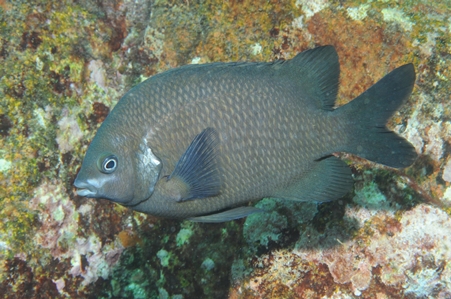General Description
Body deep, somewhat oval, with a rounded head and a single long-based dorsal fin. Scales large, bases of dorsal and anal fins with scaly sheath of smaller scales. Colour highly variable from juvenile to adult. Large individuals yellowish-brown to black with a distinct white "ear" marking on the gill cover. Small juveniles bright orange with neon-blue lines, spots and a black ocellus ringed with neon-blue on dorsal fin. With growth, body becomes brown and the blue colour and ocellus gradually disappear. The white "ear" marking is visible at all stages. To 20 cm.
Biology
Although very rare in Port Phillip Bay, the White Ear is one of the most abundant rocky reef fishes in the Sydney region. Like many other damselfishes, it is very territorial and males aggressively guard their eggs against predators.
Habitat
Lives near the bottom on exposed coastal reefs; juveniles often found in rock pools; in depths of 0-30 m.
Reefs
Coastal shores
Distribution guide
South-eastern Australia, including central and eastern Victoria.
Species Group
Depth
Water Column
Max Size
20 cm
Diet
Omnivore
Commercial Species
No
Global Dispersal
Native to Australia
Conservation Status
- DSE Advisory List : Not listed
- EPBC Act 1999 : Not listed
- IUCN Red List : Not listed







